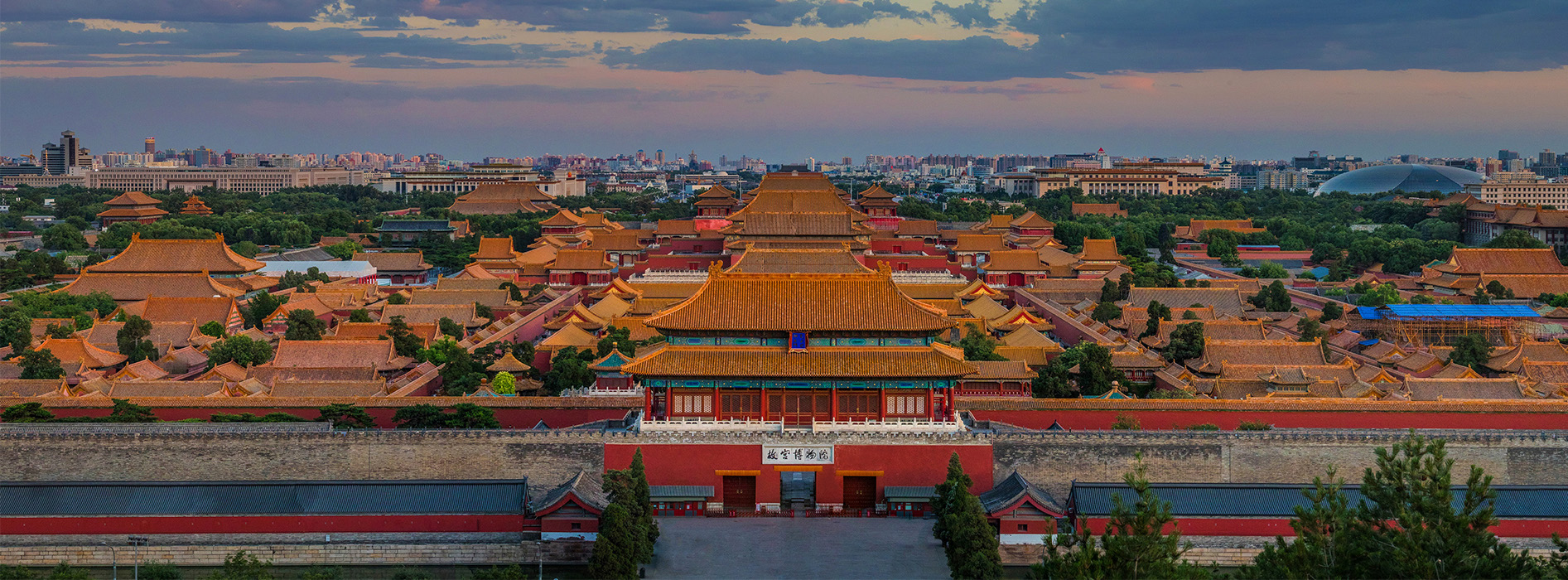The Palace Museum
Founded in 1925, the Palace Museum is a large-scale comprehensive museum established on the basis of the Forbidden City, an imperial palace for the Ming and Qing dynasties, and their collection of treasures.
The Palace Museum boasts two major cultural resources: the palace architecture of the Forbidden City and a collection of more than 1.86 million pieces (sets) of relics. A World Cultural Heritage site, the Forbidden City covers an area of 720,000 square meters and consists of over 1,000 wooden-structure buildings from the Ming and Qing dynasties, making it the largest and best-preserved ancient palace complex in China. The relics housed in the museum are mostly from the collection of the Qing Dynasty and include calligraphy and paintings, ceramics, jade, gold and silver ware, and imported relics, among many other items, establishing the museum's reputation as the most important treasure house of ancient Chinese arts.
As the guardian and manager of this World Cultural Heritage site, the Palace Museum has leveraged its abundant resources of ancient buildings and relics to study the Forbidden City and the excellent traditional Chinese culture therein, organized a variety of relics exhibitions in both physical and digital forms, carried out public education activities, and published academic works and popular science books.
While showcasing time-honored and splendid Chinese civilization to the public at home and abroad, it has also co-organized cultural exchange exhibitions with partners from countries like the UK, France, Italy, Russia, Brazil, and Iran to promote exchange and mutual learning among world civilizations.

故宮博物院
故宮博物院成立于1925年,是在明清皇宮紫禁城及其收藏基礎上建立起來的大型綜合性博物館。
故宮博物院擁有兩大文化資源,一是紫禁城宮殿建筑,二是186萬余件/套藏品。紫禁城是世界文化遺產,占地72萬平方米,擁有千余座明清木結構建筑,是中國現存規模最大、保存最完整的古代宮殿建筑群。藏品主要源于清宮舊藏,包括書畫、陶瓷、玉器、金銀器、外國文物等多種類別,堪稱最重要的中國古代藝術寶庫。
故宮博物院作為故宮世界文化遺產的保護者、管理者,依托豐富的古建筑和文物資源,研究故宮及其承載的中華優秀傳統文化,舉辦多樣的文物及數字展覽,開展公眾教育活動,出版學術著作和普及讀物。在向海內外公眾展現悠久燦爛的中華文明的同時,也與英國、法國、意大利、俄羅斯、巴西、伊朗等合辦中外文化交流展覽,共同推動世界多元文明的交流互鑒。
